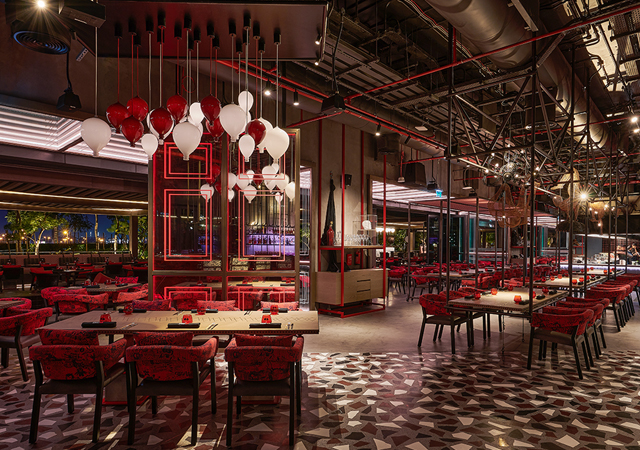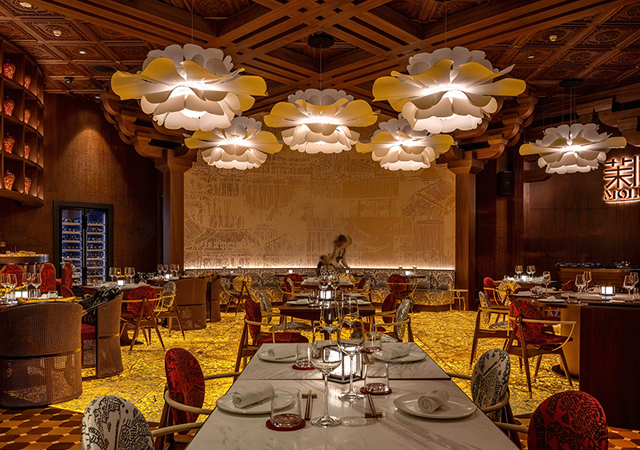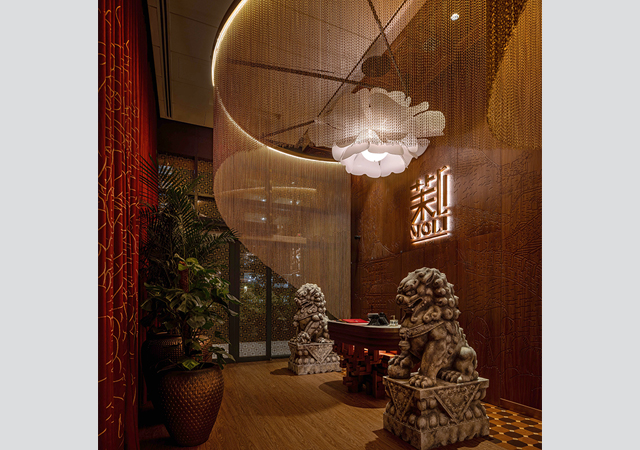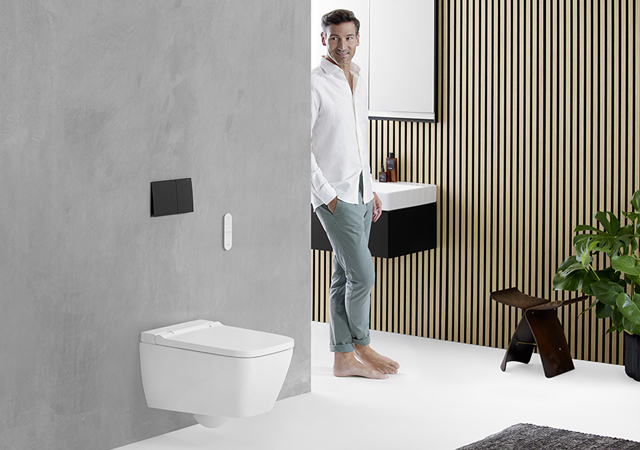
 NasHouse ... designed to establish an environment conducive to community building, collaboration and connectivity.
NasHouse ... designed to establish an environment conducive to community building, collaboration and connectivity.
A new hospitality concept targeting entrepreneurs, and creative professionals has recently opened in Dubai offering co-living accommodations and amenities within a limited membership community of 150.
NasHouse has been designed by UAE luxury interior design company 4Space Design, which has also recently seen the completion of a fine dining restaurant in Dubai – Moli by SHI – that marries traditional Chinese architecture with modern extravagance.
Located in the Opera Villas Dubai Al Barsha 1, NasHouse departs from traditional motels. It embraces a Boho style with multicultural textiles, eclectic artworks, and various decorative elements to create a space filled with warmth and character. The design also includes greenery and comfortable lounging furniture that enhances the aesthetics, fostering a relaxed and welcoming atmosphere.
The essential characteristics of NasHouse encompass a communal courtyard centrally placed amid six villas, serving as the heart of the complex and encouraging interaction among members.
 |
|
The cat room at NasHouse. |
“4Space Design’s dedication to crafting visually appealing spaces that promote meaningful social connections is evident in the courtyard’s design,” says a spokesman for 4Space Design.
Departing from traditional hotel formats, the design eliminates a traditional reception desk or check-in desk, embodying the owner’s vision of nurturing unity through shared experiences. This innovative approach blends aspects of hotel and office environments, creating a lively setting where guests feel a strong sense of community and belonging, he says.
NasHouse functions as a membership club, providing an exclusive yet down-to-earth setting that balances luxury with the comfort of a hostel environment. It serves as a sanctuary for individuals looking to connect, share, and grow alongside peers.
NasHouse accommodates the modern nomad and establishes a new standard for future hospitality endeavours.
“The objective was to establish an environment conducive to community building, collaboration, and connectivity,” says the spokesperson.
The design draws inspiration from the Bohemian lifestyle, prioritising spaces that stimulate creativity, encourage connections, and provide versatility for work and leisure.
“Initiating the inaugural hotel venture with NasHouse posed distinct challenges, notably converting six residential villas into a unified hotel setting. This task demanded a detailed strategy to cater to the varied requirements of a contemporary audience, including entrepreneurs and travellers, while maintaining a Boho-inspired design theme throughout the project,” says the spokesman.
“The future of the hospitality industry is anchored in providing personalised experiences, offering flexible solutions, and designing multifunctional spaces that seamlessly integrate work, leisure, and community engagement. Design strategies will be instrumental in facilitating this transition, emphasising the creation of adaptable environments that meet the evolving requirements of modern travellers,” he remarks.
Moli by SHI
Meanwhile, Moli by SHI, which is located in Dubai Hills, opened its doors late last year. Moli means “jasmine” in Chinese, symbolising purity, grace, and elegance. True to its name, Moli by SHI immerses visitors in a feeling of opulence and sophistication right from their arrival at this restaurant.
 |
|
The ceiling at Moli by SHI features prominently hanging light features shaped like jasmine flowers, providing gentle and ambient lighting, |
Upon entering the restaurant, guests encounter traditional architectural elements reminiscent of a Chinese temple. Two guardian lion statues sit right at the reception, setting the tone for the immersive cultural experience that the restaurant offers. Walls adorned with classic carvings create a mesmerising backdrop, while plush banquettes featuring intricate Chinese artwork set the stage for a lavish dining experience.
The interior of the space showcases a captivating architectural feature deeply rooted in Chinese tradition – the Dougong system. Originating from ancient Chinese construction techniques, Dougong represents a distinctive method of interlocking wooden brackets that provide structural support within a building’s framework. This intricate and time-honoured element is prominently featured in the columns, contributing to the structural integrity of the space and its aesthetic appeal.
 |
|
Two guardian lion statues sit right at the reception of Moli by SHI. |
“The restaurant’s wall cladding is a testament to the meticulous artistry and cultural richness inherent in Chinese craftsmanship. Adorned with wood engravings, the surface becomes a canvas that elegantly tells a visual narrative, with each intricately carved detail capturing the essence of tradition and the enduring legacy of Chinese culture,” the spokesman explains.
Above, the ceiling features prominently hanging light features shaped like jasmine flowers, providing gentle and ambient lighting, further emphasising the essence of Moli.
“A metallic bead curtain flows into the space, merging the walls with the ceiling, gracefully mimicking the fluid movements of a dragon, as it weaves through the restaurant space and around the columns, starting from the end of the entrance and winding gracefully through the space,” he says. “In crafting the design concept, careful consideration was given to the selection of furniture; each piece was crafted with meticulous attention to detail. The chosen furniture seamlessly blends functionality with the rich cultural narrative.”
The seating arrangements and furniture are expertly crafted with a nod to traditional Chinese woodworking techniques. They are adorned with jacquard velvet fabric that presents an interpretation midway between a figurative depiction of magical tigers and the Chinese mythological realms.








.jpg)




.jpg)




























.jpg)



































